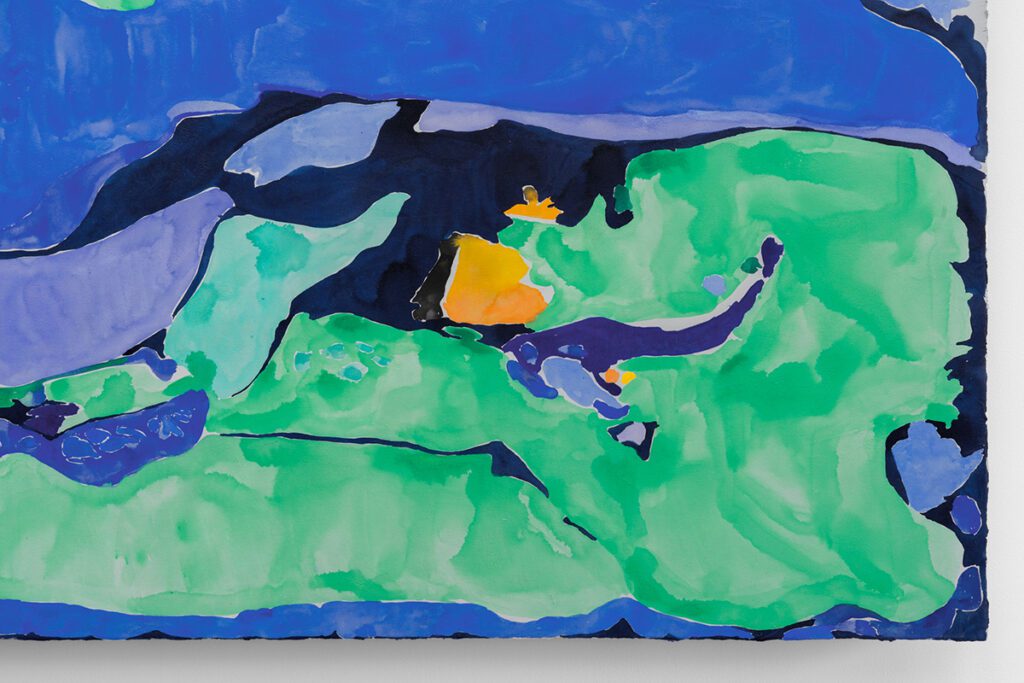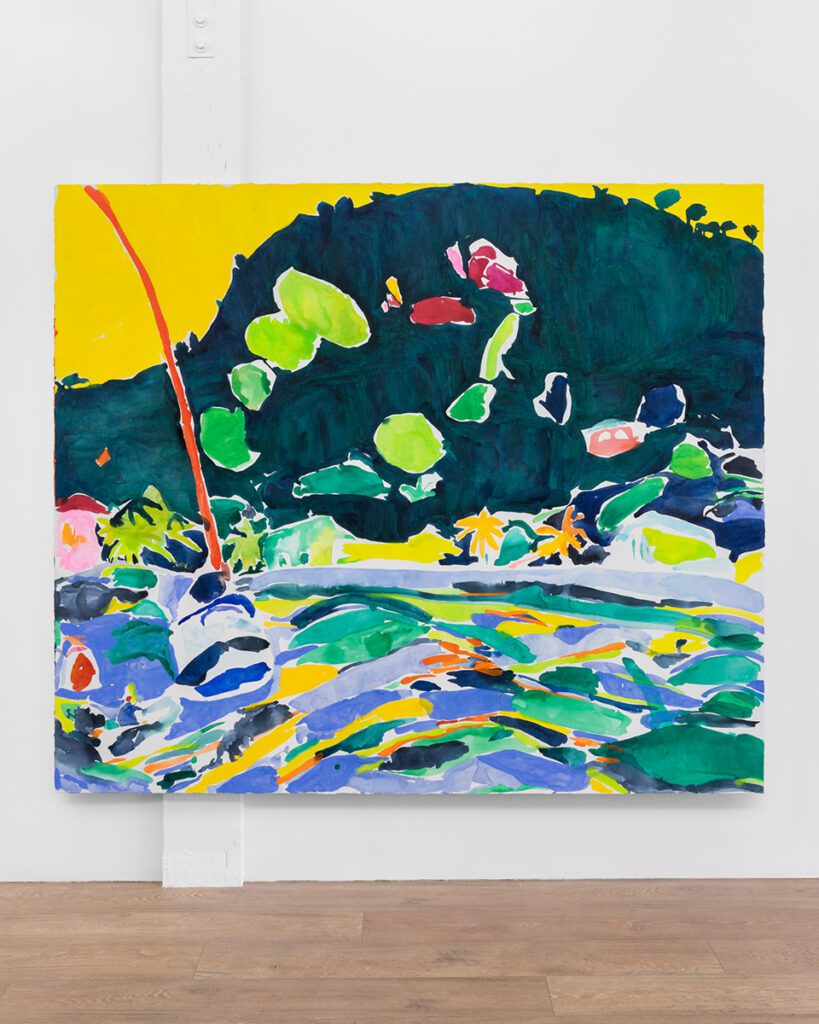The Earthen Ocean: Maru Aponte at Pale Fire
26 May 2024By Rhys Edwards

From Tuvalu and Tonga in the Pacific Ocean to Isle de Jean-Charles in New Orleans, the form of the Island accrues tragic, immanent salience: vanishing geographies transmuted ever-further into useful symbolism for both the failures of climate policy and the private terrors of social isolation. These spaces now occupy a perverse popularity, much in the same way an extinct bird or fish species becomes known to a general public only in its final absence. Or, for those locales still fortunate enough to retain a space in the popular imagination as a tourist destination, the Island dwells within colourful stereotype.
Maru Aponte’s solo exhibition titled Salt Stains at Pale Fire in Vancouver, transfigures the notion of the Island from forlorn absence or desirous fantasy, into a material configuration of place and memory. The popular instrumentalization of these places, whether for economic or discursive purposes, is itself a denigration of their specificity. To speak alternately of their loss, or their desirability, is to foreclose the possibility of their being understood as anything other than metaphor. In her exhibition, Aponte works to undermine this abstraction. The work manifests as an encounter that captures something of her discrete, perceptual relationship with the Island—Mona Island in the Puerto Rican archipelago specifically—but it is also a liquid reflection on the relationship between painting and place-making. Each of the paintings in Salt Stains was based off of an original watercolour sketch made on a boat en plein air, rendering the Mona shoreline and its many caves; two of these smaller sketches are visible in the space, while several larger canvases comprise the remainder of the work.

In traditional watercolour painting, there are several typical principles: 1. One must work off of a white ground, to retain the luminosity of colour; 2. One must work from light to dark, as the transparency of the paint provides poor coverage over darker pigments; and, 3. It is better to work at a smaller scale, as larger bodies of drying wet paint are more prone to induce buckled paper and pooling of pigment. Aponte eschews all of these principles in service of a greater objective: to realize the liquidity of the Island itself, and its inter-relationship with her own subject position as a Puerto Rican migrant living in Vancouver.
Instead of painting off of white, Aponte lays her colours on top of a grey ground. This has the curious effect of infusing each painting—which otherwise employs a vivid colour palette—with a kind of dullness. The greyness of Vancouver leeches into Puerto Rico, muddying its Caribbean splendour. But the grey has another effect: it causes each of Aponte’s pools of colour to seem to float off of the ground itself, imparting an airiness to the composition (this effect is compounded at Pale Fire, where the canvases are hung with spacers off of the wall, seeming to float in the space).

Aponte also gives herself the freedom to paint in the opposite direction of the traditional watercolour rule, beginning with dark pigments. In the small study Pink Tides (2024), the fluorescent green mast of a fishing boat covers the dark orange of a sunset. Elsewhere, bodies of white paint seem to hover above the grey ground, producing a curious, inverted sense of depth. These techniques shouldn’t work. But the effect strangely de-familiarizes the ocean landscape, and by extension, the genre of landscape generally.
Refining these studies at a smaller scale on paper, Aponte translates them to canvas at a larger scale, with some canvases measuring up to seven feet in length. In this there is a tension between the historically feminine-coded medium of watercolour—reserved for illustrators and Sunday painters—and the historically masculine-coded scale of the heroic canvas. Aponte retains the freshness of the watercolours at this size (notably, despite their scale, each work was completed in 2024). Dozens of barely bound pools of colour threaten to bleed into each other, but Aponte manages to preserve them in isolation, curtailing them in continuous interplay across the composition.

The sum effect is a body of work that tempts us, the viewers, to read it as landscape; but there is no terrain to cling to. Even the sky itself is called into question. A large painting, Fourth Dimension (2024), centres the open cavity of a cave, but we may only access the land and water that surrounds it. In this vacancy, we are denied the access that earlier denizens of Mona may have enjoyed; Aponte furnishes them with this negation inside the painterly frame, a refuge. The emphasis on organic bodies of flat colour calls to mind, locally, the abstractions of Mina Totino or Elizabeth McIntosh, but it might be more accurate to compare them with the coastal landscapes of Takao Tanabe, which capture something of the hauntological essence of a place.
Watercolour is the medium of the Island—it is pigment (earth) floating in water. In Aponte’s use of watercolour, there is an embrace of the Island—not as the colonial fantasy captured and dissected in the botanical specimens and ethnographic studies of settlers throughout the Caribbean and beyond, but as the aqueous, diffused, deracinated terrain for a self both at home and beyond it.
Salt Stains by Maru Aponte ran from March 23–May 26, 2024 at Pale Fire in Vancouver, BC.
Feature Image: Installation view of Salt Stains by Maru Aponte. Photo by Felix Rapp courtesy of Pale Fire.



